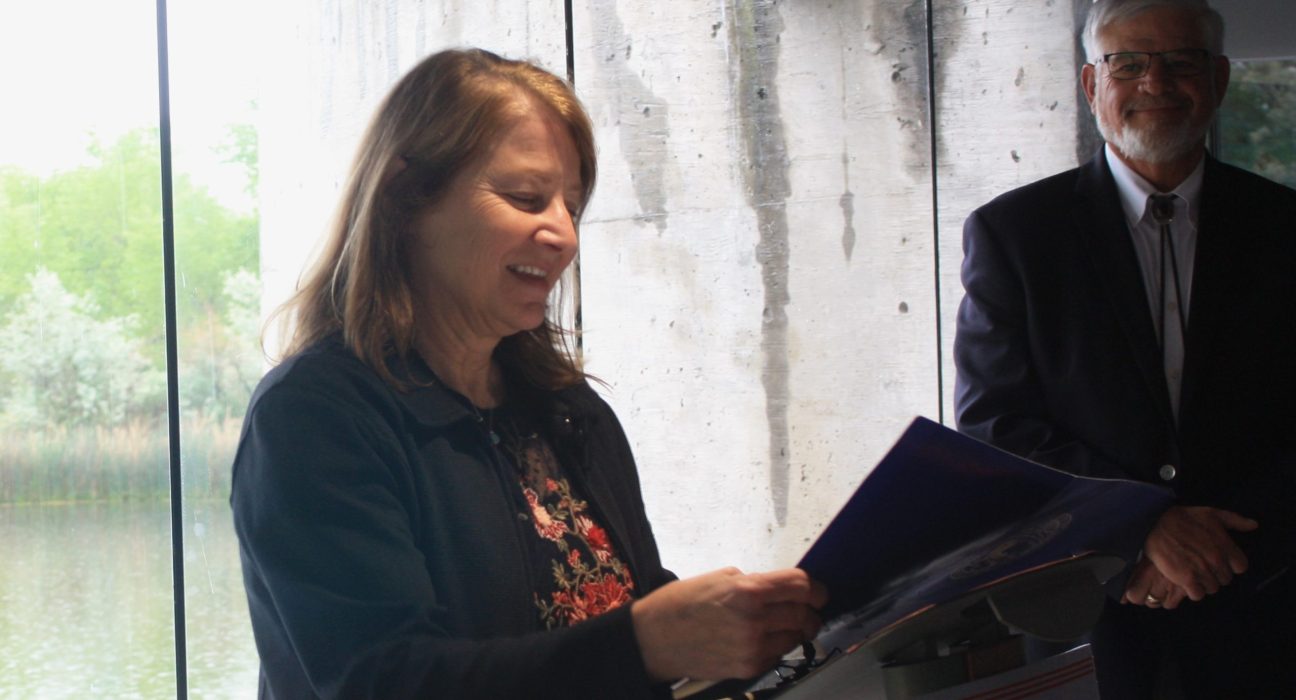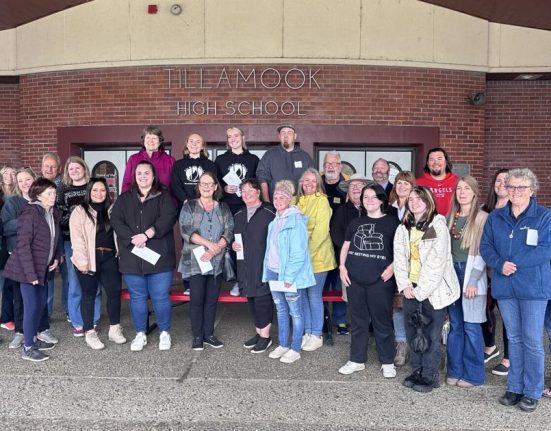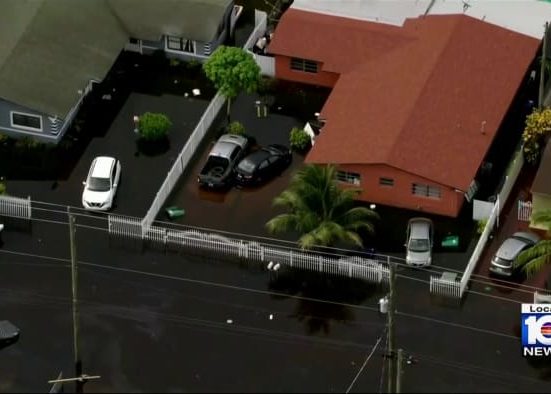The U.S. Department of Interior announced $520 million in funding for 57 projects throughout the United States to improve water infrastructure and drought resiliency and for projects centered around U.S. Bureau of Reclamation facilities. That list includes five New Mexico projects totalling $14.7 million.
Acting Deputy Secretary of the Interior Laura Daniel-Davis visited Albuquerque to announce the funding on Thursday.
This funding comes from both the Bipartisan Infrastructure Law and the Inflation Reduction Act.
“The vast majority of the western United States is experiencing drought or abnormally dry conditions,” Daniel-Davis said. “And when conditions like this strike, we know it doesn’t just impact one community. It impacts all of us.”
She said President Joe Biden’s Investing in America Agenca, which includes the Inflation Reduction Act and Bipartisan Infrastructure Law, provides historic resources to minimize the impacts of drought and to “develop a long term plan to facilitate conservation and economic growth.”
“The Bureau of Reclamation is hard at work to get these investments on the ground where they can have the most impact and start helping,” she said.
New Mexico State Engineer Mike Hamman said that the U.S. Drought Monitor shows that “New Mexico is in the bullseye” when it comes to drought and aridification. He also spoke about the projections that New Mexico will experience more aridification in the future.
“We are the driest state and we need to do all that we can to prepare ourselves for that future,” Hamman said.
He said the funding announcement is an example of the partnerships that are necessary.
“None of this work can be done separately by either the state, the irrigation districts, or the federal government all by themselves, it takes a partnership, and we relish this opportunity to celebrate this investment today,” he said.
Realigning the river
The largest New Mexico project is $10.7 million to realign the Rio Grande in the San Acacia reach near the Bosque del Apache National Wildlife Refuge. The idea behind this project is that crews will move the river to a channel that is naturally lower than the existing channel.
Ashlee Rudolph, a project manager with the U.S. Bureau of Reclamation, said the realignment of the Rio Grande comes on the back of a pilot project that rerouted the channel to a lower point. She described that pilot project as the first phase of the realignment and said that it stretched for approximately three miles.
The new funding announced on Thursday will help realign a section of the Rio Grande that includes the north end of the refuge and stretches for about four to five miles, extending outside of the wildlife refuge boundaries.
Rudolph said the realignment could reduce the drying patterns that typically occur in the San Acacia reach during the summer months, which could in turn help species that rely on the riparian corridor including the Rio Grande silvery minnow.
Ultimately, the Bureau of Reclamation hopes to realign approximately 20 miles of the Rio Grande in the San Acacia area.
The realignment is needed because of sediment that has built up in the San Acacia reach, leading to a phenomenon known as channel perching. While water would normally flow to the lowest point, the sedimentation in the San Acacia reach prevents it from doing so. In the Lower San Acacia Reach, the channel is perched above the valley floor, water table and floodplain.
This sedimentation is in part due to the channelization of the Rio Grande, though the river was already perched prior to the channelization that occurred in the 1950s. Historically, when perching occurred, floods would move sediment out and the river would return to a lower elevation. But factors like lower peak flows, increased vegetation density and channel and levee stabilization have limited the ability of floods to clear out the channel and “periodically reset the river,” according to a technical report drafted by the Bureau of Reclamation and released last year.
By realigning the river to the lower ground, which Rudolph said is where the water would naturally flow, the U.S. Bureau of Reclamation could reduce the loss of water to seepage.
The realignment project is different than a controversial proposal to use of the low flow conveyance channel in the San Acacia area to increase the amount of water delivered to Elephant Butte Reservoir, though Jason Casuga, the CEO of the Middle Rio Grande Conservancy District, did not rule out the possibility that the low flow conveyance channel could be used in the future.
“The low flow is a tool we need to reimagine those tools for the challenges that we face today,” he said.
However, the funding announced Thursday will not be used for that purpose.
Casuga stressed that decisions made on the Rio Grande will be done based on science and in coordination with the U.S. Fish and Wildlife Service to ensure that endangered species are protected.
Other projects that will receive funding in New Mexico include:
- $2.5 million for road rehabilitation at El Vado Lake State Park to improve access to the recreation area
- $600,000 for road and channel maintenance in the San Acacia reach of the Rio Grande
- $650,000 to rehabilitate the Elephant Butte Historic District Dam Site lift station and the septic system at the fish hatchery
- $275,000 to study whether solar panels could be used in the Elephant Butte Historic District with its restrictions related to the historic district designation and to purchase and install new windows for historic buildings
In neighboring states, the funding includes nearly $9 million for upgrades at the outlet works at the Glen Canyon Dam in Arizona and $34 million for a project at the Leadville mine drainage tunnel in Colorado that includes constructing a new water treatment plant and deconstructing an old treatment facility.
Orphaned oil and gas wells
In addition to announcing funding for the water infrastructure, Daniel-Davis met with representatives from New Mexico’s Energy, Minerals and Natural Resources Department and announced $25 million in funding to clean up orphaned oil and gas wells in the state.
The funding, which comes from the Bipartisan Infrastructure Law, will allow New Mexico to plug about 117 oil and gas wells, remediate four sites and complete surface restoration at 33 locations.
“President Biden’s Investing in America agenda is empowering communities across the country to confront long-standing environmental injustices by making a historic investment to plug orphaned oil and gas wells,” Daniel-Davis said in a press release. “These investments are good for our climate, for the health of our communities, and for American workers. With this additional funding, New Mexico – and states all across the country – will put more people to work to clean up these toxic sites, reduce methane emissions and safeguard our environment.”
According to a press release, the U.S. Department of the Interior has announced $318.8 million from the Bipartisan Infrastructure Law and $69.5 million from the Inflation Reduction Act for projects in New Mexico since the two laws went into effect.
Thursday’s announcement came about one week after Interior Secretary Deb Haaland visited New Mexico to announce $60 million in funding for the Lower Rio Grande Basin.







